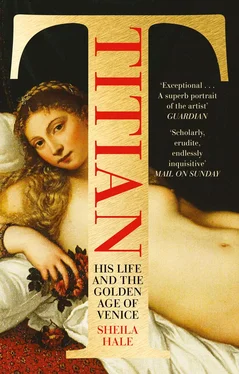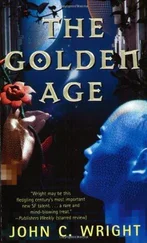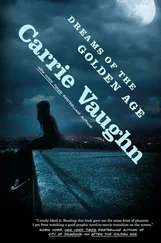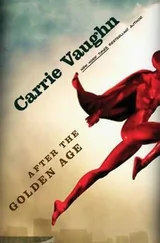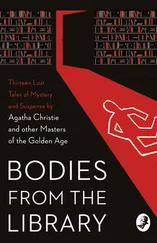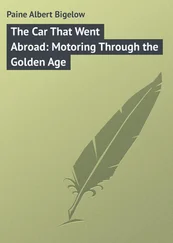Nothing in Venice is more perfect than this. It is one of those things that sum up the genius of a painter, the experience of life, the teaching of a school. It seems painted with molten gems, which have only been clarified by time, and it is as solemn as it is gorgeous and as simple as it is deep.28
But Ruskin loved Giovanni for the wrong reasons, seeing him as the last of the pure, godly masters ‘who did nothing but what was lovely, and taught only what was right’, rather than as the founding father of the golden age of Venetian painting. If Giovanni Bellini struggled to keep pace with Titian, Titian could hardly have liberated himself immediately from such a master, whose example continued to haunt his early works; and to whom he would pay homage in his last painting, the Pietà, in which the Virgin cradles her dead Son beneath a mosaic semi-dome, which deliberately refers to the – by then archaic – neo-Byzantine settings of Giovanni’s many depictions of the Virgin and Her Son.
Although the absence of documentation makes the chronology of Titian’s earliest paintings notoriously impossible to establish – dating of the undocumented paintings was not even attempted until the late nineteenth century, when the invention of photography made stylistic comparisons feasible – Titian’s votive picture of Jacopo Pesaro Presented to St Peter by Pope Alexander VII (Antwerp, Koninklijk Museum) is traditionally supposed to be his first surviving work, possibly painted while he was still in Giovanni Bellini’s studio or shortly after he left it. Jacopo Pesaro was a Venetian patrician and papal legate, who adopted the nickname Baffo after he was appointed Bishop of Paphos in Cyprus. The simulated all’antica reliefs on the podium of St Peter’s throne seem to depict a story about Venus, to whom Paphos was sacred because after her birth from the sea she was blown on to its shore in the half-shell. The naval battle in the background refers to Pesaro’s role as commander of the papal fleet in the recapture of the Greek island of Santa Maura (modern Lefkas) from the Turks in August 1502. He posed for Titian grasping a banner that bears the Borgia coat of arms while kneeling before St Peter – who resembles some of Giovanni Bellini’s figures – to whom he is presented by the Borgia pope Alexander VI, who wears full papal regalia painted in an archaic manner that Titian would soon abandon.
Although the earliest record of the existence of this painting is a drawing of it by Van Dyck made in Venice in 1623 – and the inscription bearing Titian’s name is later than the picture – no one has ever doubted that it is by his hand. The problem is not whether but when he painted it. It is unlikely to be earlier than 1503, when Alexander VI died. It could have been painted in or shortly after 1506, when Jacopo Pesaro is first known to have returned to Venice. Pesaro was born in 1460, and this portrait looks like a man in his mid-forties, which fits a date around 1506.29 There are some awkward passages – the perspective of the floor and sea doesn’t quite work – that are understandable in an artist not yet twenty trying his hand at a complex and ambitious composition. But, for all its faults, it is a remarkable painting. Evidently it satisfied its patron who years later would commission from Titian another altogether more masterly celebration of the same victory over the Turks.30
Another candidate for Titian’s earliest painting is now, after a thorough restoration, the Flight into Egypt, which came to the Hermitage palace in the late eighteenth century, when it was subjected to one of the destructive treatments that were characteristic of the period. Although mentioned by Vasari as a commission from Andrea Loredan for his palace on the Grand Canal (now the Ca’ Vendramin Calergi), the picture was dismissed by some modern scholars31 on account of the muddy colouring of its landscape and procession of awkward figures. The restoration32 in the Hermitage laboratory, which was completed in 2011, removed layers of discoloured varnish and insertions by other hands, reattached the paint layer where it had come loose from the primer and closed horizontal seams that had opened where the three pieces of the canvas support had been stitched together. The picture is now much easier to read, and many, but not all, scholars are convinced that it is a very early work by Titian, possibly painted even before he entered Giovanni Bellini’s studio.
Exhibitions of Titian’s paintings often begin with the Gypsy Madonna (Vienna, Kunsthistorisches Museum), so called because of the young Virgin’s dusky complexion, as the most striking example of Titian’s debt to and liberation from the example of Giovanni Bellini. Technical investigations show that it started as an attempt to understand by imitation Giovanni’s later way of treating the subject. Beneath the finished painting is a different Madonna, which is very close to Bellini’s Virgin and Child of 1509 in the Detroit Institute of Arts. Titian cancelled that homage to his great master. His Virgin and Child are set against a landscape with a soldier and fortress in the far distance and a brand-new cloth of honour, its crisp folds indicating that it has just that minute been shaken out. Their faces are plump, as though modelled in low relief, while their lowered eyelids invite us to meditate on the humanity of the two central figures of the Christian story. Whereas Giovanni’s Madonnas were usually carefully underdrawn, Titian in this painting used as his guidelines only summary strokes made with a fairly wide brush with thin wash shading applied at the underdrawing stage. He made changes as he painted: his first Madonna seems to have had a different face, and her hair was tied with a ribbon; the fingers of the Christ child were first stretched, then covered with the Madonna’s red robe and repainted. The result looks like nothing that had been painted by the hand or studio of Giovanni Bellini. With the Gypsy Madonna Titian proved to himself that he had learned everything he needed from that source. By then he had fallen under the spell of a different Venetian painter, who became for a while his alter ego. Giorgione (the name means ‘Big George’) of Castelfranco, who was closer to Titian’s age than Giovanni Bellini, introduced Titian to what Vasari called ‘the modern manner’, the style that, for want of a better adjective, art historians to this day call Giorgionesque.
Конец ознакомительного фрагмента.
Текст предоставлен ООО «ЛитРес».
Прочитайте эту книгу целиком, купив полную легальную версию на ЛитРес.
Безопасно оплатить книгу можно банковской картой Visa, MasterCard, Maestro, со счета мобильного телефона, с платежного терминала, в салоне МТС или Связной, через PayPal, WebMoney, Яндекс.Деньги, QIWI Кошелек, бонусными картами или другим удобным Вам способом.
